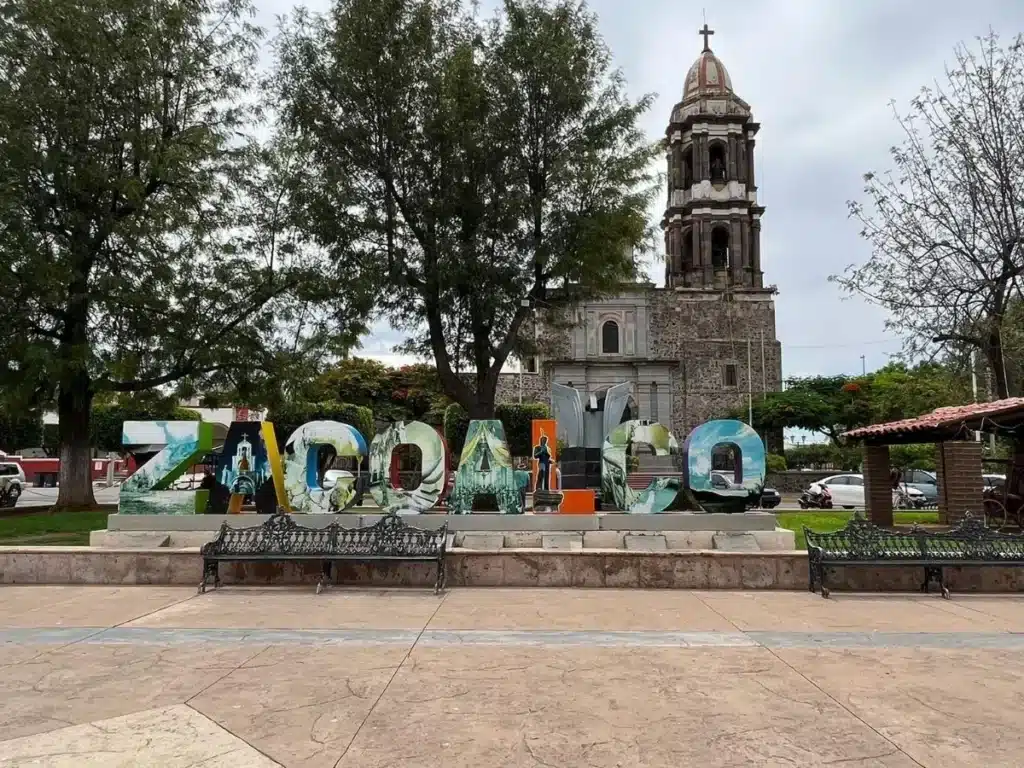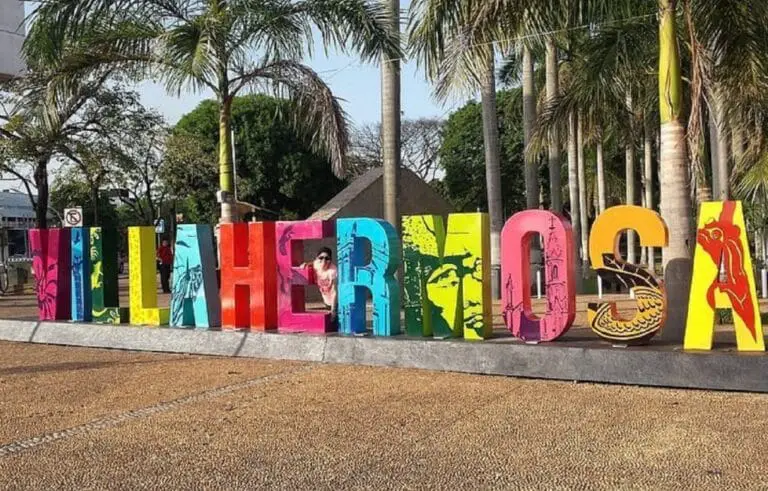Zacoalco de Torres, Mexico: Home of Equipal Chairs

Zacoalco de Torres, Mexico: Home of Equipal Chairs
About an hour south of Guadalajara, on the road to Ciudad Guzmán, is the town of Zacoalco, on the southern shore of Lake Atotonilco, in a valley surrounded by lush vegetation.
This town is famous because it’s where the equipal chairs are manufactured.
At the top of a nearby hill is a beautiful temple that guards the place’s inhabitants; from there, any visitor can enjoy a panoramic view to appreciate all the extensions, houses, and streets of this picturesque town and its harmony with nature.
Equipal chairs in Zacoalco de Torres: Why they’re special


In Zacoalco, more than 300 families manufacture equipal chairs, ancient pre-Hispanic seats made of wood and leather.
The word equipal derives from the Náhuatlicpalli, which means seat, but history describes that they were sumptuary objects, testimony of different social status; that is to say, they were the seats of the most important people.
It is said that Moctezuma had his “equipal chair,” which he ordered to be brought from Zacoalco de Torres and that the gods and shamans also sat on them.
The classic equipal chair is made with materials from the region.
The artisans know when there are good and bad seasons to cut the wood on the hill: “It is better to cut it when it is full,” they say, “when the sap is ready in the plant. That way the wood lasts longer, but if it is cut in the tender moon, the moth can damage everything.”
The wood “palo dulce” is used for the bottom and the frame of the equipal, on the other hand, the stakes are made of “posa panal,” wood with beautiful fiber.
How are Equipal Chairs made?


The elaboration of an equipal chair requires a special skill since all the wooden elements are carved with a curved machete or “cazanga.”
It is impressive to see the artisan making the stakes with this tool; in each cut the contrasting colors of the wood emerge.
The frame that supports the equipal and the one that shapes the wide backrest are joined with ixtle, a type of vegetable fiber taken from the maguey.
They also weave with this fiber the part that corresponds to the seat. The procedure for preparing and spinning the ixtle they learned from their ancestors: it is extracted with cazanga, washed, dried, and spun through a tarabilla.
Pigskin leather is preferred because it has holes, allowing airflow.
On top of the maguey fiber they put the reed, and then, on top of it all, they put the leather, typically pigskin.
How long do Equipal Chairs last?

A leather equipal can last twenty years or sometimes more.
Like other handicrafts in the country, manufacturing “equipales” is a family tradition passed down from generation for many years.
This form of apprenticeship has allowed families to remain united because they work in the same workshop.
You may want to read: Tlaquepaque Jalisco’s Enchanting Sights: From Artisans to Aromas
In Zacoalco de Torres, the workshops are no exception; they are also family-run; the father, his children, and the children’s children work together.
“My father taught me,” says Mario Lopez, an old artisan who initiated his children in this art.
“They are the new reform,” he comments with an affectionate chuckle, pointing to the grandchildren. “Some die and others come,” but through the generations, the art, science, and culture remain in time.
Things to do in Zacoalco de Torres, Mexico


If you visit Zacoalco, the first stop you should make is Tacos Mary, traditional and well-known, even by politicians and Mexican celebrities.
When the Spaniards arrived and conquered us, a culinary fusion took place, which is the product of these tacos, unique in the entire state of Jalisco.
They are made of mole, beans, and pork and are freshly roasted.
The recipe is over a hundred years old, it has been passed down from generation to generation.
Micaela was the one who started the taco business over a hundred years ago in the traditional neighborhood of “Las Cebollas:”
“My great-great-grandmother said that she used to prepare tacos for the priest Miguel Hidalgo. Foreigners and people from other states have come here. The ex-governor of Monterrey has come here, he used to send his helicopter just for tacos, for his private events,” said María Vicenta, Micaela’s great-granddaughter.
After the tacos you can visit Equipales Imperial, they have a gallery where you can see the different styles of equipal chairs.
They also have a workshop where you can learn how they are made.
Another mandatory stop is the main square and the San Francisco de Asis Temple, which dates from the seventeenth century.
Visiting Zacoalco de Torres will transport you to the past, because of its handicrafts and pre-Hispanic origin. It is a town full of magic and fusion.
Festivities
- Feast of the Virgin of Guadalupe: January 12 in the Chapel of Cerrito
- Fiesta del Señor de la Salud: August 6th
- Fiesta de San Francisco de Asis: October 4
Getting to Zacoalco de Torres, Mexico

Again, Zacoalco de Torres is a town in Jalisco, Mexico.
It is part of the Ciénega region in the south-central part of the state, approximately 60 km (about 37 miles) southwest of Guadalajara, the state capital and largest city.
Getting to Zacoalco de Torres From Guadalajara:
*By Car: The most direct route is via Federal Highway 54 (Carretera Guadalajara-Colima).
Directions: Head southwest on Av. Colón and continue onto Federal Highway 54D. Take the exit towards Federal Highway 54 (free road). Continue on Federal Highway 54 until you reach Zacoalco de Torres.
Travel Time: Approximately 1 to 1.5 hours, depending on traffic conditions.
*By Bus: Several bus lines operate between Guadalajara and Zacoalco de Torres.
Departure: Buses depart from the Central Nueva de Autobuses (the main coach station in Guadalajara).
Travel Time: Around 1.5 to 2 hours, depending on the bus service and traffic.
*By Taxi or Uber:
You can also hire a taxi or use platform services like Uber or Didi for a more direct and private ride.
Zacoalco de Torres and the Equipal Chairs: Final thoughts
The production of equipales in this town has been subject to a process of change due to the demands of today’s economy.
Therefore, the artisans of Zacoalco, without abandoning the original workmanship, have started to create new and varied models in which they substitute leather for fabrics of different textures and colors.
In this sense, the “Equipaleros” are willing to manufacture custom rustic furniture: small, and large; with rods, reeds, leather, or fabric, so that they combine with any style of living room or bedroom.
This diversity of custom details has given them fame and prestige, which is why Zacoalco’s equipales are so appreciated by locals and foreigners.
The equipales are comfortable and economical furniture that give a rustic touch to our homes, but at the same time, they are manifestations of cultural heritage.
In addition to preserving this historical past and beyond its cultural and artistic value, the manufacture of equipales represents an important source of income for many families of this town that live thanks to handicraft production.
The neighborhood called Las Cebollas has preserved the “equipalera” tradition because, as they say, its inhabitants still have indigenous blood; however, there are workshops all over town, and each one shows a good level of imagination and creativity in their products.
If you visit Zacoalco de Torres, you may return home with a new equipal chair, in which you can feel -like a Moctezuma- on your own throne, eminent and comfortable.






